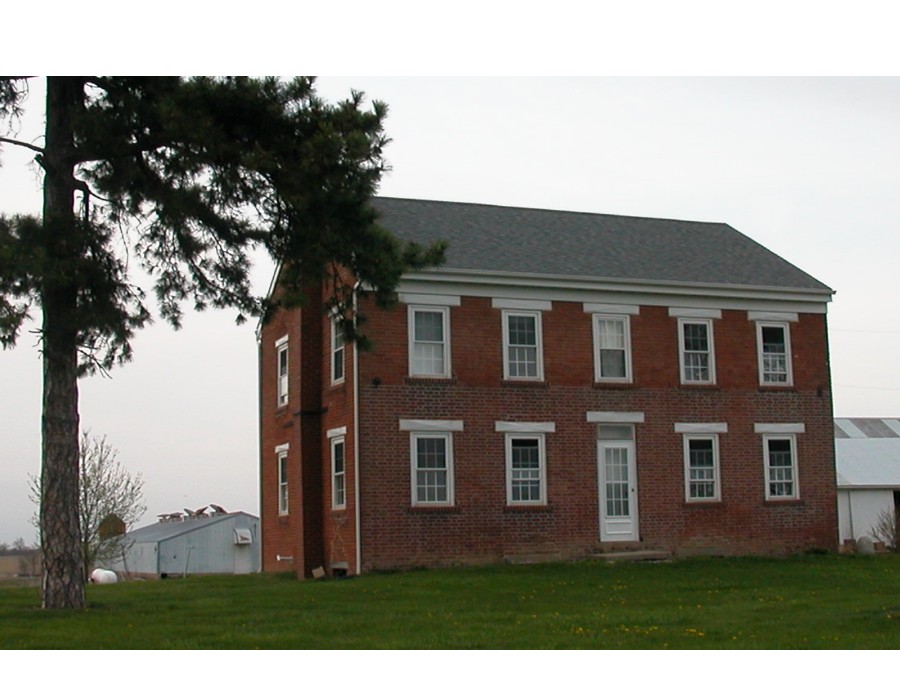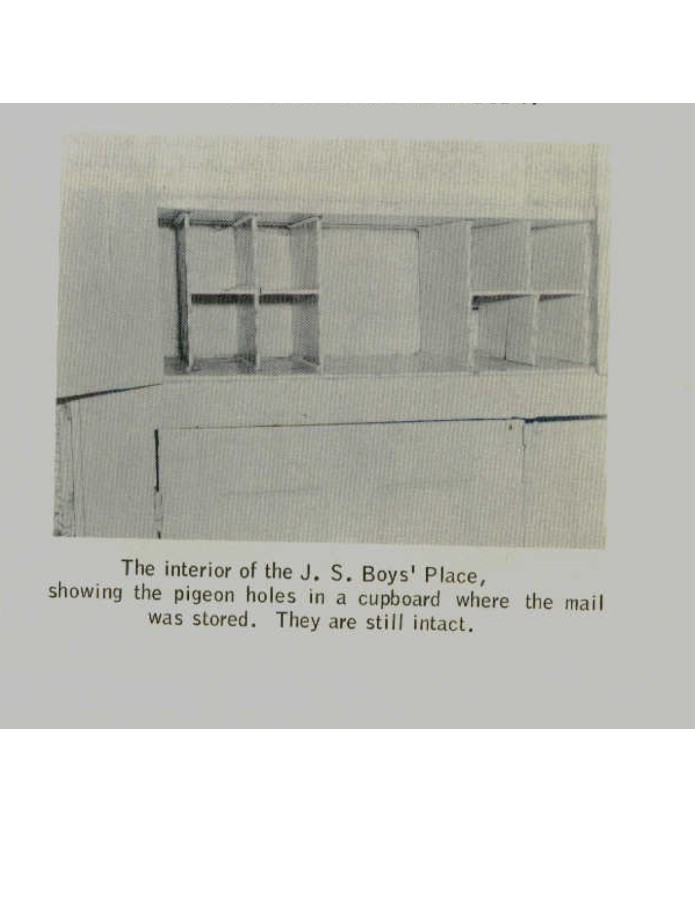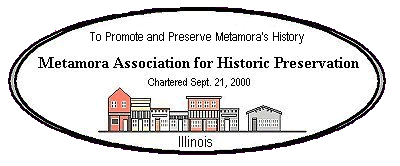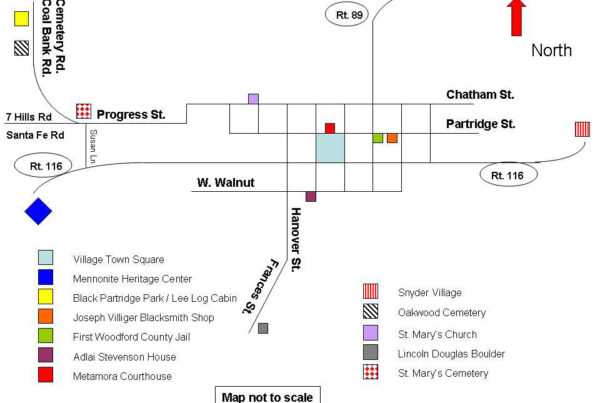

Early Metamora Post Office and Mail Route
The first post office in the Metamora area was known as BLACK PARTRIDGE. It was located on the James Boys farm three miles north of the present Metamora, and was established February 4, 1836, with Mr. Boys as postmaster. Black Partridge was the name of an Indian chief whose wigwam at one time stood where the Boys house still stands. The house was on the main line of the old stage coach line that ran from Chicago to Bloomington. The post office name was changed to PARTRIDGE POINT on June 7, 1837. The post office was kept there until August 23, 1845, when it was moved to METAMORA, which up to that time was known as HANOVER.
It was at the post office that was at Partridge Point that the information about the mail route from Tremont was found. The number of the route was 2783. It operated from Tremont to Partridge Point, via Washington, once a week on horseback. The contractor was George W. Parke and he received $175 a year. Service was from June 2, 1840, to June 30, 1842. The Boys house today still exists and is privately owned. You will find a cupboard with pigeon holes for the mail still intact in the kitchen of the home.
West Brittain Post Office
A Woodford County post office that has been forgotten is that of West Brittain. It was located on the old Chauncy Baker farm in Partridge township. The Bakers were grandparents of John C. and Simeon M. Snyder both Metamora Bankers. This post office was known as an “accommodation” post office. It was never a legal post office but a place where anyone in the neighborhood who happened to be in Chillicothe (across the river) would bring back the mail for all persons living in the locality and leave it at the Baker place where residents could pick it up. West Brittain was established October 11, 1854, and was discontinued November 15, 1860. Mr. Baker was the only postmaster. It is thought that the post office was in his home until a small square building was built nearby. In later years, the name “West Britttain” which had been painted in black was now very dim but readable. This building has been destroyed.
Some of the information for this article was taken from the 1956 Metamora Herald written by Harry L. Spooner.
History and photos submitted by Shirley A. Adams.


